Showing Records: 1 - 10 of 17
A Comprehensive Strategy For Space, 1988 Mar
Student research paper by Major Steven L. Ellis, USA and Major Myron C. Lynch, Jr., USA in satisfaction of the requirements for the Advanced Research Program elective. In this paper, the authors outlined a plausible U.S. military strategy designed to counter a possible Soviet space strategy at various levels of the conflict spectrum.
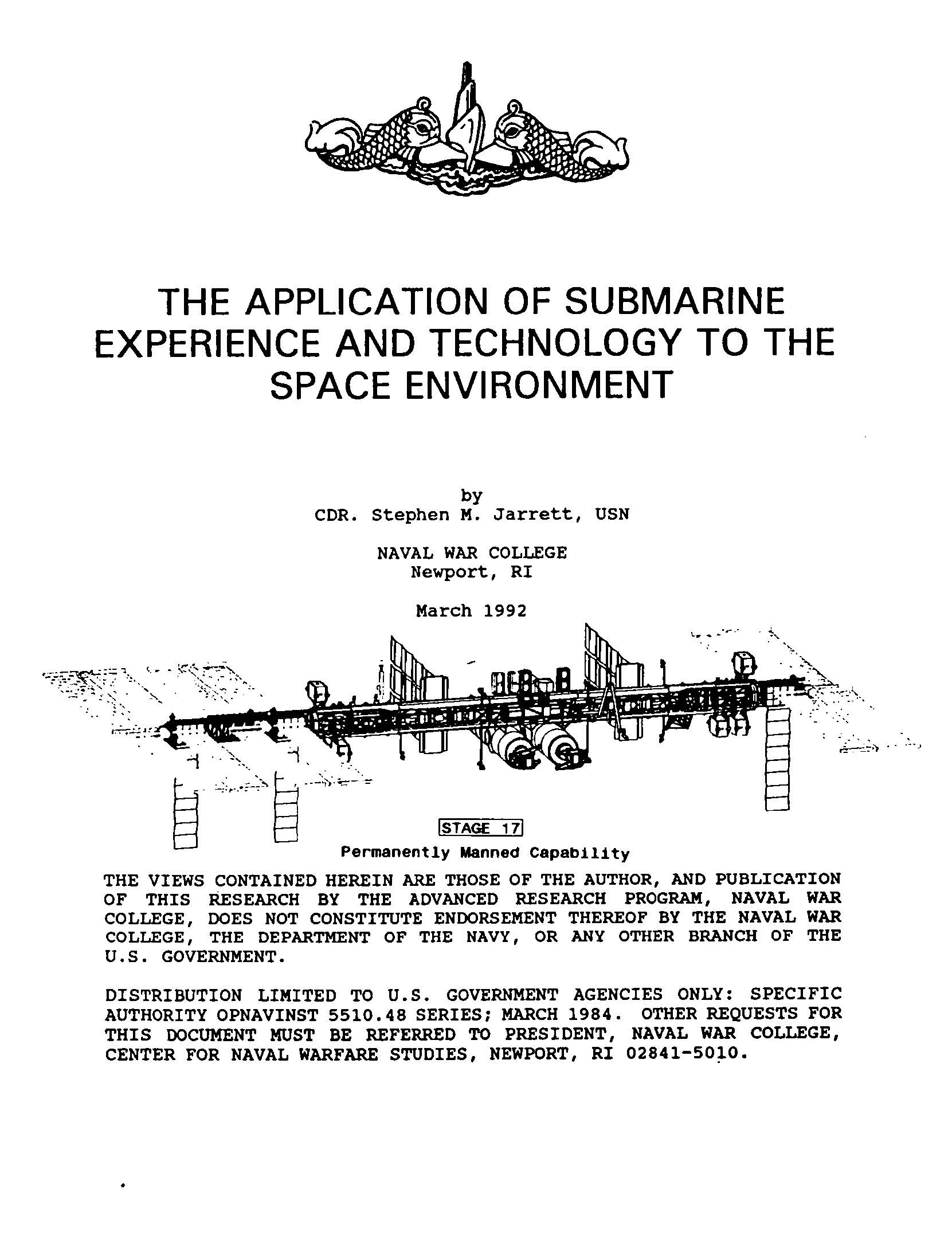
Application Of Submarine Experience And Technology To The Space Environment, by Stephen M. Jarrett
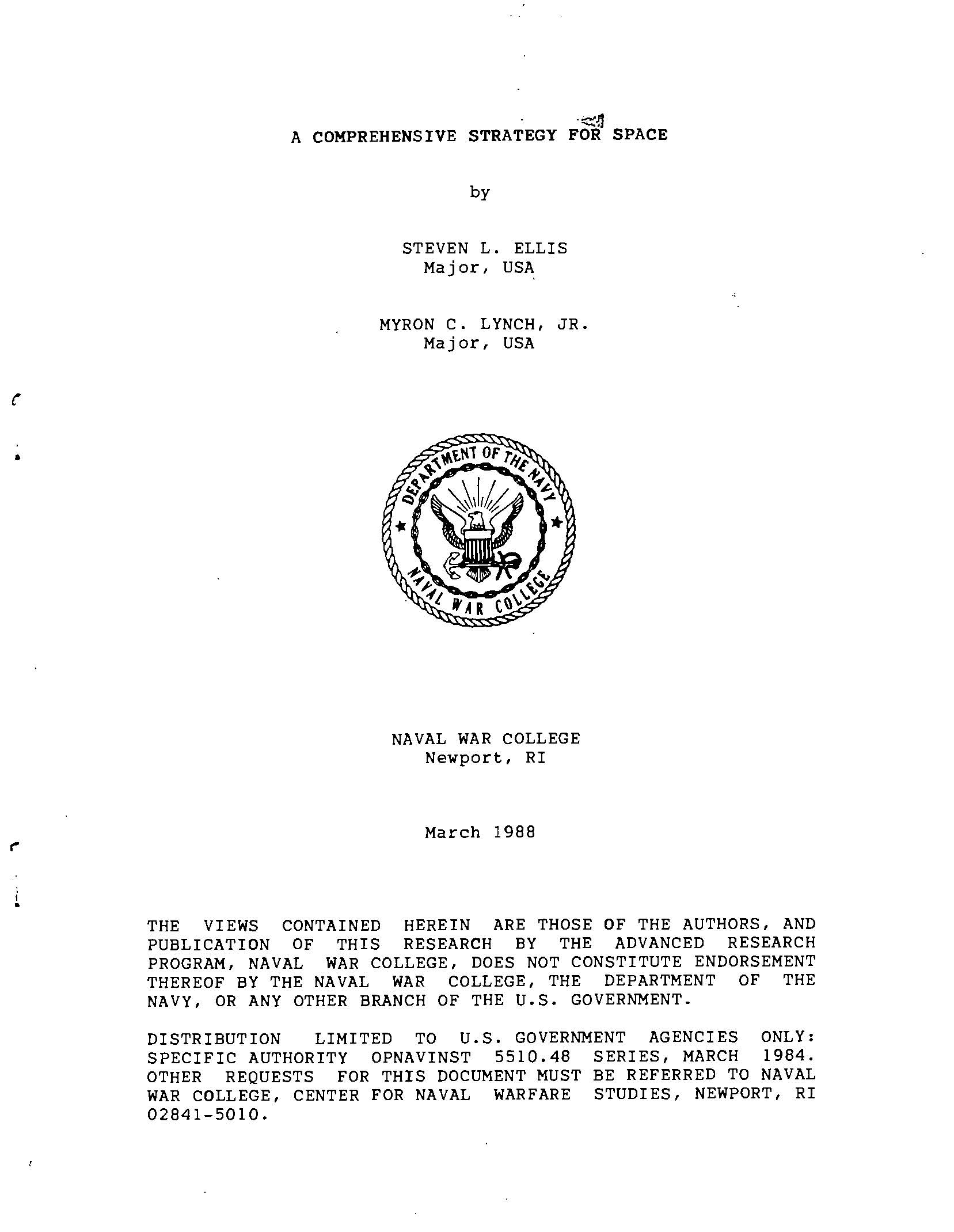
Comprehensive Strategy For Space, by Steven L. Ellis and Myron C. Lynch, Jr.
Gomez, Andre D.: Implications of Space on Naval Strategy, 1961 Mar 1
Student paper by Col. A. D. Gomez, USMC for the course in naval warfare at the Naval War College. This paper deals with the implications of space on naval strategy and represents an attempt to analyze potential military effects of space systems on naval strategy and operations with emphasis on different types of satellites.
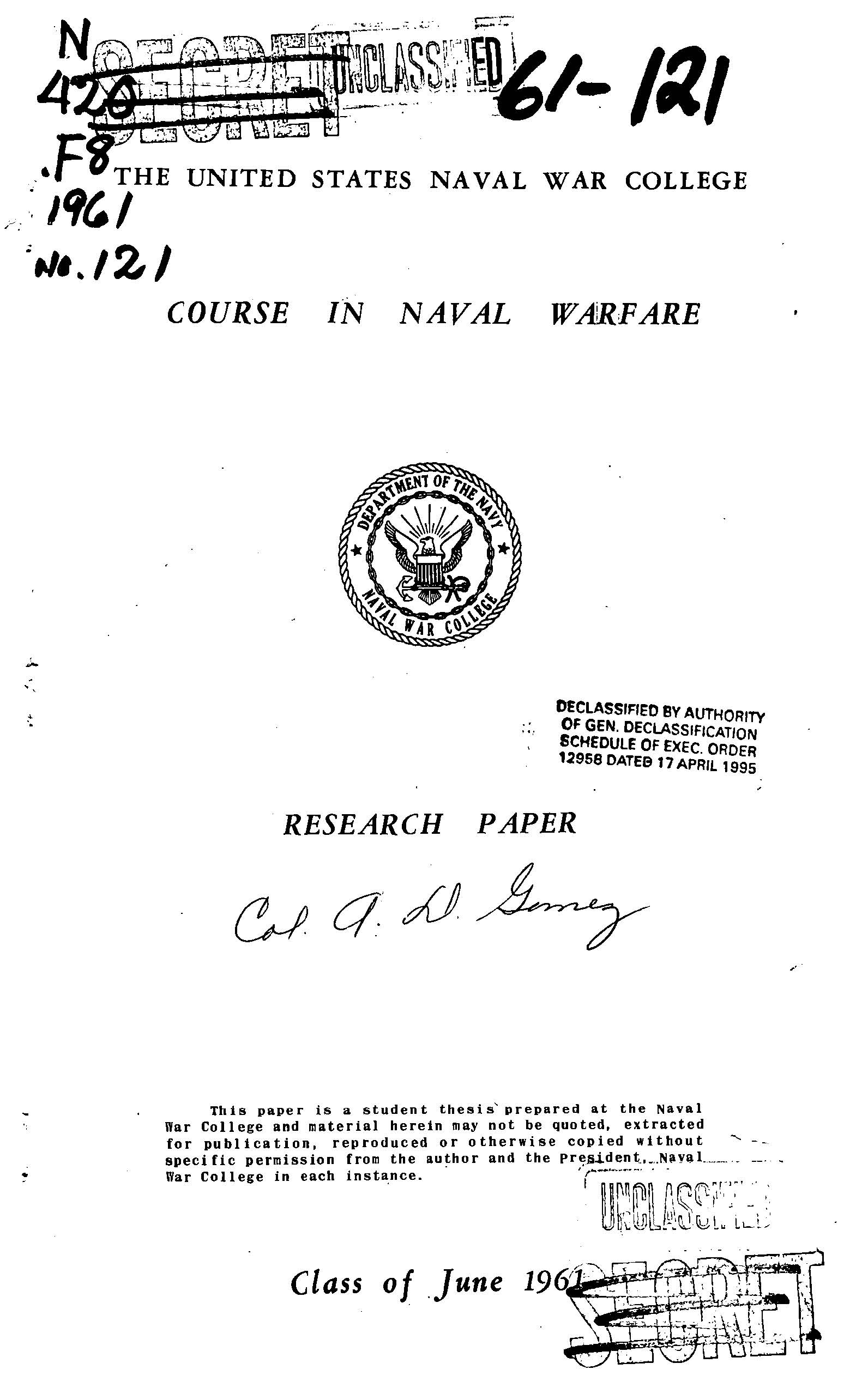
Implications of Space on Naval Strategy, by Andre D. Gomez
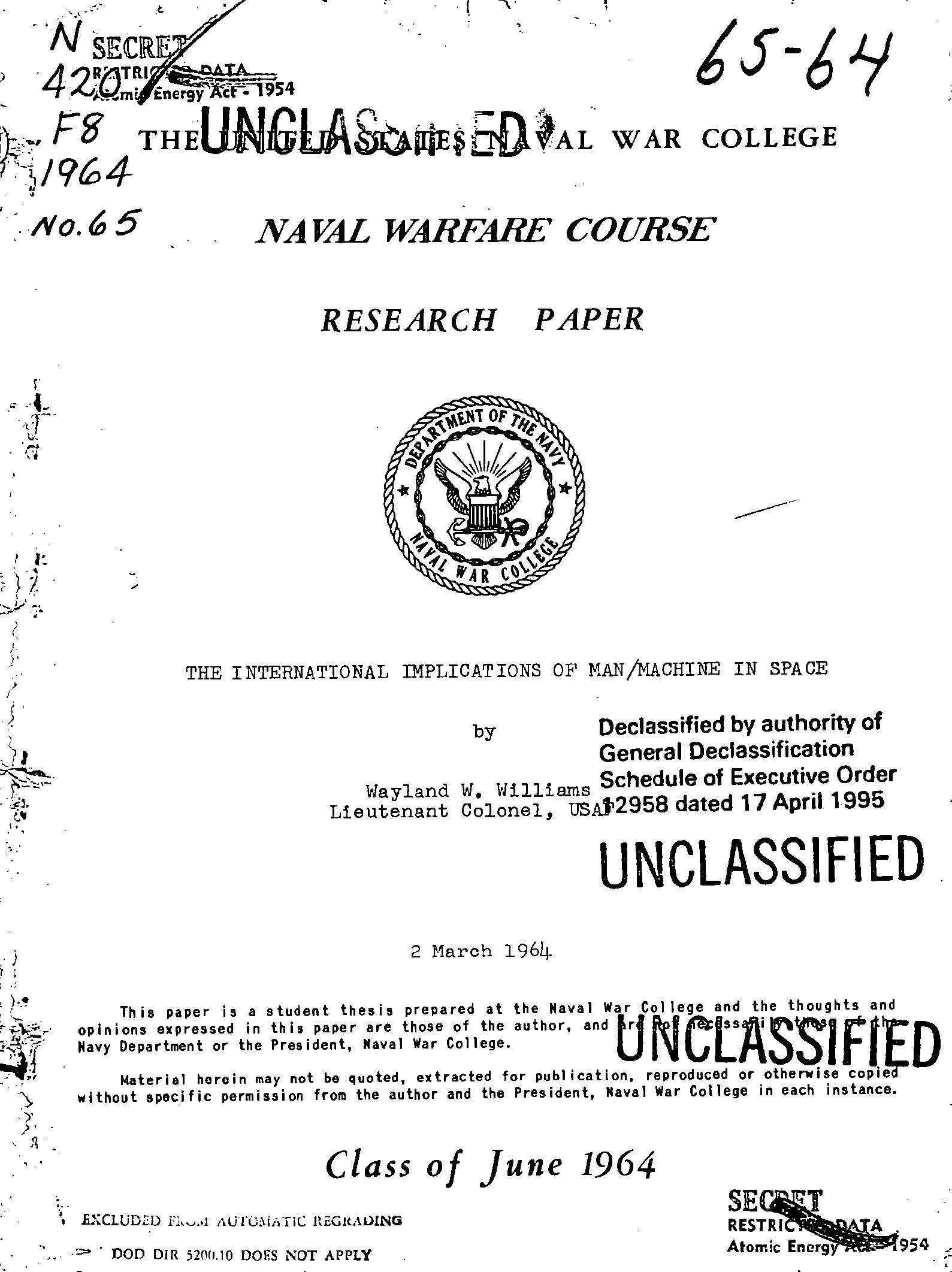
International Implications of Man/Machine in Space, by Wayland W. Williams
Space Fundamentals for the War Fighter, 1994 May 31
A paper submitted to the faculty of the Naval War College in partial satisfaction of the requirement of the Department of Operations by William G. Clapp, Ed.D, Major, Utah National Guard that was later updated for publication as a Strategic Research Department occasional paper because of the timeliness of the topic and the belief that it deserved wider circulation.
In this paper, Clapp provided an overview of the space environment and its assets in order to understand their capabilities. Clapp argued that space assets are vital elements that influence both peacetime and wartime missions at all three levels of military activity: strategic, operational, and tactical. This paper provided insights concerning a few of the limitations and capabilities of U.S. space assets and should help the war fighter understand the environment in which the battle for aerospace superiority must be fought and won.
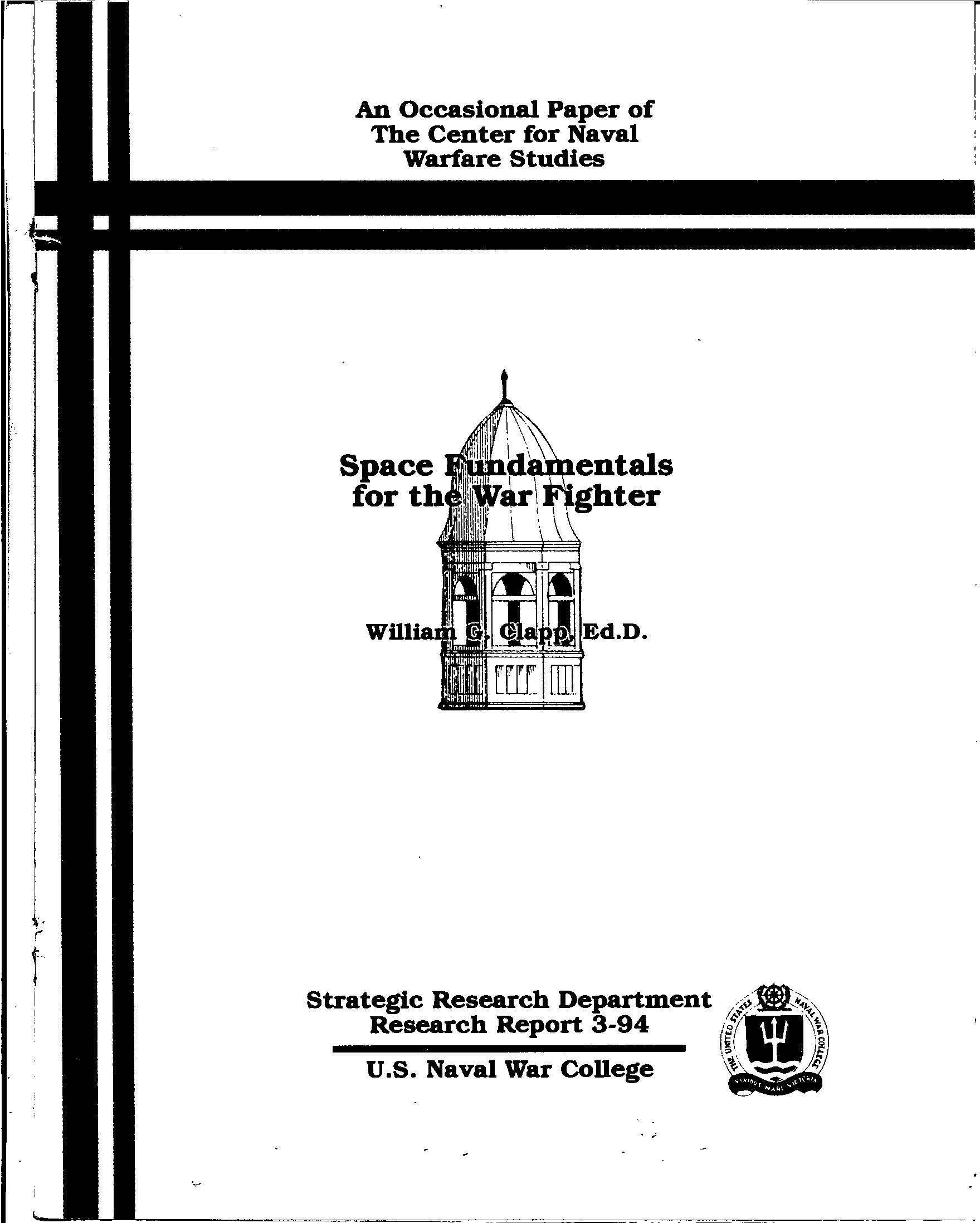
Space Fundamentals for the War Fighter, by William G. Clapp
"Space Fundamentals for the War Fighter" by William G. Clapp, Ed.D., 1994 May 31
Compilations of articles, portions of books and government documents used in Strategy, National Security Decision Making, and Operations Department Curriculum.
